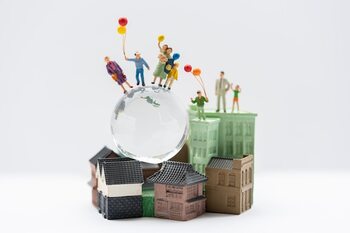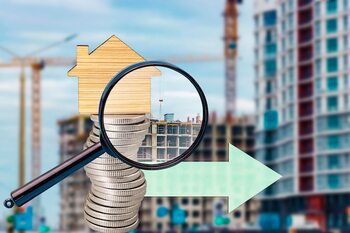The influence of urban design on your property value

The influence of urban design on the value of your property is a crucial topic for those looking to maximize their real estate investment. In Costa Rica, the planning and aesthetics of cities not only impact quality of life but also play a fundamental role in the appreciation of properties. Discover how factors such as infrastructure, green spaces, and urban mobility can raise the price of your home and transform it into a gem of the real estate market. Don't underestimate the power of urban design!
The interconnection between urban design and economic development.
The interconnection between urban design and economic development is a crucial aspect that influences property values. A well-designed urban environment not only enhances the area's aesthetics but also fosters economic activity by attracting businesses, tourists, and investments. Areas with proper planning often have efficient and accessible infrastructure, which facilitates local trade and increases the demand for housing in those areas. When residents perceive their environment as functional and pleasant, they are willing to pay more for properties, thereby boosting their appreciation.
Additionally, well-designed public spaces, such as parks and plazas, significantly contribute to the well-being of the community. These places not only become meeting points for neighbors but also promote an active and healthy lifestyle. The creation of green spaces and recreational areas can enhance the perception of the neighborhood, which is a determining factor for those looking to buy or rent a property. In this sense, urban design becomes a driver of local economic development by elevating both the visual appeal and the functionality of the inhabited environment.
2. Green spaces: the new gold for properties
Green spaces have become an essential element in modern urban design, and their influence on property value is undeniable. The incorporation of parks, gardens, and recreational areas not only enhances the aesthetics of an area but also promotes a healthy and sustainable lifestyle. Families are increasingly seeking to live in environments where they can enjoy nature, which has led to a surge in demand for properties near these spaces. In this sense, having green areas nearby can result in a significant increase in property valuation.
In addition to their visual appeal and the well-being they provide, green spaces offer crucial environmental benefits. They act as urban lungs, improving air quality and reducing the heat island effect in cities. This not only attracts environmentally conscious buyers but also helps create more cohesive and pleasant communities to live in. For these reasons, investing in properties near green spaces or those that include these elements in their design can be an effective strategy for increasing their long-term value.
3. Impact of public transportation on real estate valuation
Public transportation is a key element in real estate valuation, as it directly influences the accessibility of properties. An efficient and well-designed transportation system not only facilitates the daily commute of residents but also increases the appeal of an area to potential buyers or renters. Areas with train stations, bus stops, or trams tend to experience higher demand, resulting in a sustained increase in property prices. Proximity to these mobility options can be a decisive factor for many families when choosing their home, thereby elevating the neighborhood's profile.
Moreover, the integration of public transportation with other urban infrastructures, such as bike lanes and pedestrian paths, helps create a more friendly and sustainable environment. This multidimensional approach not only improves the quality of life by allowing for smoother and less polluting mobility, but also enhances the area's image as a desirable place to live. Consequently, real estate developers are increasingly paying attention to these aspects during their projects, recognizing that good connectivity benefits not only current residents but also ensures a continuous appreciation of real estate value in the future.
4. How nearby services influence your property
Nearby services, such as schools, hospitals, supermarkets, and recreational areas, are a determining factor in property valuation. Proximity to these amenities not only enhances the quality of life for residents but also increases the neighborhood's appeal to potential buyers or renters. In Costa Rica, where urban life can be dynamic and bustling, having easy and quick access to these services is a key element that interested parties consider when evaluating a property. This access translates into higher demand and, consequently, a significant increase in the property's value.
Additionally, urban design that facilitates the integration of these services helps create more cohesive and friendly communities. A well-planned neighborhood with accessible public spaces fosters social interactions and promotes a sense of belonging among its residents. Well-maintained green areas and accessible parks are clear examples of how the physical environment can positively influence place perception. The more attractive the surrounding environment is thanks to these elements, the more willing buyers will be to invest in properties within that area. In summary, investing in a location with nearby services is not only practical; it is a smart strategy to maximize the value of your property.
5. The importance of safety in urban design
Urban design safety is a fundamental aspect that not only affects the quality of life of residents but also directly influences property values. A well-designed and safe environment promotes a sense of well-being and trust among inhabitants, which translates into a higher demand for housing in those areas. Features such as adequate lighting, visibility, and street designs that encourage social interaction are key elements that can reduce crime and increase the perception of safety, making properties more attractive to potential buyers or renters.
Additionally, design strategies that prioritize safety also contribute to creating cohesive communities. Well-designed public spaces where neighbors can interact generate a sense of belonging and natural surveillance among residents. This not only improves the quality of the environment but can also significantly increase property values by positioning the area as a desirable place to live. Therefore, investing in urban design that considers safety is a strategic decision for those looking to maximize their real estate investment, thus creating attractive and safe spaces for all.
6. Current trends in urban design that enhance property values
Current trends in urban design focus on creating more sustainable and livable spaces, which in turn increases the value of properties. One of the most prominent approaches is the development of compact communities that prioritize accessibility and proximity to essential services. This planning not only promotes a more comfortable life for residents but also attracts buyers and investors who value the time saved on commuting. The integration of commercial areas, recreational centers, and residential zones within the same urban environment has proven to be a key factor in increasing property values in these areas.
Another relevant aspect is the incorporation of green spaces and natural elements within urban design. The inclusion of parks, vertical gardens, and ecological corridors not only enhances the aesthetics of the environment but also promotes a healthy and active lifestyle. Studies have shown that properties near green spaces tend to have higher demand, resulting in a significant increase in their value. Furthermore, these spaces contribute to the emotional well-being of residents, which has become a priority for many buyers aware of the impact of the environment on their quality of life. In summary, urban design that advocates for sustainability and social well-being not only transforms cities but also enhances the economic potential of the properties within them.
7. Case studies: neighborhoods that have grown due to their urban planning
Case studies on neighborhoods that have experienced notable growth due to proper urban planning are clear examples of how urban design can influence property values. Neighborhoods like Santa Ana and Escazú in Costa Rica, for example, have seen accelerated development due to the implementation of efficient infrastructures, recreational areas, and the creation of public spaces that foster social interaction. These elements not only improve the quality of life for residents but also attract new buyers and investors, thereby raising real estate prices in these areas.
Another interesting case is that of the neighborhood of Heredia, where sustainable mobility has been prioritized and bike lanes and accessible public transport have been established. This type of planning has allowed for the creation of a more friendly environment for citizens, which is attractive to young families and professionals. As more people wish to reside in well-planned areas with easy access to essential services, the value of properties in these neighborhoods tends to increase significantly. Thus, when analyzing these examples, it becomes clear that proper urban planning not only enhances the aesthetics of the place but also serves as a powerful driver for increasing real estate value.
8. The role of the community in urban environment design
The design of the urban environment is not just a matter of architectural planning, but it also thrives on the active participation of the community. Collaboration among residents, urban planners, and local authorities can result in a space that reflects the needs and desires of its inhabitants. When citizens are involved in the design process, areas are created that are not only functional but also attractive and welcoming. This contributes to a sense of belonging and community pride that can be decisive in increasing property values in that area.
Additionally, a committed community can drive initiatives that improve infrastructure and public spaces, such as parks, plazas, or safe pedestrian routes. These enhancements not only beautify the environment but also promote an active and healthy lifestyle, which is highly valued by potential buyers. Thus, a vibrant and well-designed neighborhood has the power to attract both new residents and investors, thereby increasing the value of local properties. In this sense, the active role of the community becomes an essential engine for transforming urban spaces into desirable places to live and invest.
9. How to analyze the appreciation potential in new constructions
To analyze the potential for appreciation in new constructions, it is essential to consider several elements that directly influence the future value of the property. One of the most relevant aspects is location. Areas with planned urban development projects, such as new public transport routes, shopping centers, or parks, tend to experience a significant increase in demand. In addition, it is vital to assess the quality of the architectural and urban design of the project; buildings that integrate green spaces and recreational areas not only enhance the aesthetics of the environment but also contribute to a more active and healthy community life, which attracts potential buyers interested in a balanced lifestyle.
Another key factor in determining the potential for appreciation is the sustainability and energy efficiency of the property. Buildings that incorporate green technology and meet environmental standards are increasingly valued by conscious consumers, which translates into higher prices in the market. Additionally, it is advisable to research the type of services and infrastructure available in the vicinity; accessible schools, hospitals, and shops significantly enhance the appeal of a new construction. By conducting a thorough analysis considering these elements, you can make informed decisions that maximize your long-term real estate investment.
10. Strategies to capitalize on urban trends and increase your investment
Urban trends are a reflection of the needs and desires of today's society, and taking advantage of them can be key to increasing the value of your property. Observe how spaces are being developed in your city: the creation of pedestrian zones, the integration of efficient public transport, or the revitalization of historical areas are just a few examples that can enhance the neighborhood's appeal. Investing in properties strategically located near these urban improvements will not only ensure a higher quality of life for its residents but will also increase its long-term appreciation.
Additionally, consider implementing changes to your property that align with sustainable and eco-friendly trends. The demand for homes that incorporate green technologies, such as solar panels or rainwater harvesting systems, is on the rise. These features not only reduce environmental impact but also attract more conscious buyers who are willing to pay a premium price for properties that promote a sustainable lifestyle. Stay informed about urban innovations and adapt your real estate investment to capitalize on them; this way, you can stay one step ahead in the competitive real estate market.



